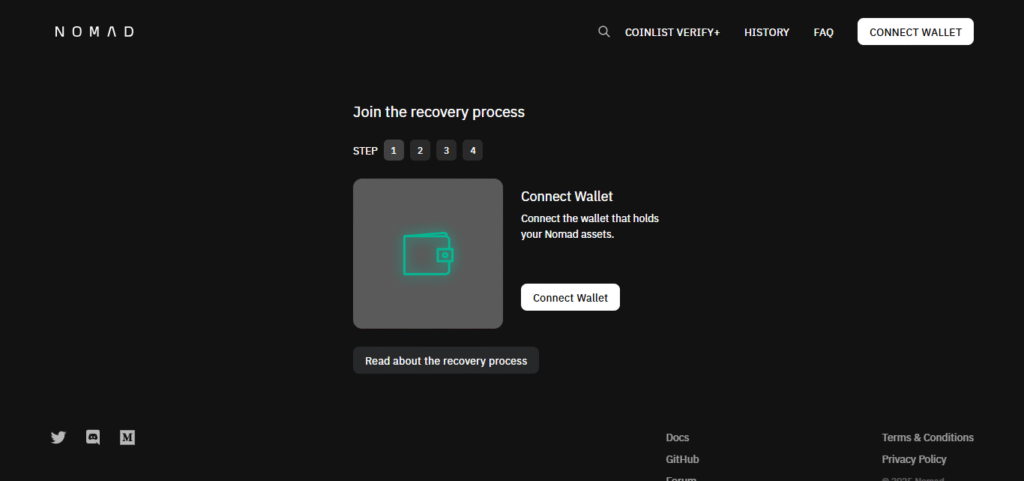In this article, I discuss the ways to identify bridging vulnerabilities within blockchain technology.
Hackers often target blockchain bridges which allow movement of assets between blockchains because of the intricate structure and substantial transactions.
Bypassing systems that control hacking of these bridges weakens the defenses of the entire blockchain ecosystem. Therefore, knowing the methods of hacking is important for countermeasures.
What are bridging vulnerabilities in blockchain?
Bridging vulnerabilities in blockchain deals with the weaknesses of security within a cross chain bridges. Bridging blockchain vulnerabilities these bridges transfer data between different blockchains.
Bridging vulnerabilities in blockchain ensures the movement of assets through smart contracts, oracles or validator networks.
Various vulnerabilities may exist due to centralized trust models, weak signature verification, poor contract logic or insufficient validation of cross chain messages.

Through bridging vulnerabilities hackers take advantage and exploit these weaknesses to access locked funds, mint tokens or disrupt the functionality of the bridge.
Because of the value funds comes with, hackers often get tempted to exploit it. Closing these holes take time and requires strict measures for monitoring all activities during access to ensure safe and reliable cross chain access.
How To Detect Bridging Vulnerabilities in Blockchain

In August 2022, the Nomad Bridge was exploited due to a glaring logic flaw in its smart contract. This loophole caused an excess withdrawal of $190 million.
It enabled anyone to withdraw funds just by replicating a previous transaction with the sole modification of the recipient address. No cryptographic validation was needed.
How to Identify the Glaring Problem In This Case:
Bridging and Immutable Smart Contract Augmentation
Developers missed an important step during manual audits. The bridge contract considers messages “valid”, marking them as such due to the bridge logic over marking each message as valid and reception without verification of the message hash. A simple cross check retrieve to message roots authenticated proofs would have had result roots.
Static Analysis Tools
Based on these patterns, numerous blocks within the smart contract could be flagged – it is very possible that tools like Slither and MythX failed to reason about logic gaps or absence of verification embedded on their smart contract logic.
Unit & Fuzz Testing
A fuzzing framework like Echidna that works on intermediary message validation could hypothetically test valid message interjections or substitutes randomly. Such a test would most probably showcase the bug where invalid messages were still considered as accepted messages.
Simulation of Attack Scenarios
Forensic simulations, such as resubmitting a transaction with different parameters, could have identified the issues with verifying signatures and messages.
Monitoring & Alerting
Monitoring systems such as Forta could provide real-time alerts regarding an abnormal surge in transaction volume on the bridge, contrived withdrawals, and other activities that may result in significant asset depletions.
Why are blockchain bridges often targeted by hackers?

Cross-Chain Attack Surface – The existence of multiple interconnected blockchains results in additional potential vulnerabilities.
Immature Technology – Compared to other components of the blockchain ecosystem, bridges have underdeveloped infrastructure due to being newer.
Insufficient Audits – Bridges lack routine detailed security assessments and maintenance checks, resulting in inadequate protection.
Unified Fraud Expectations – Weaknesses in one chain may be assumed in every other chain within a multi-chain setup.
Vulnerable Smart Contracts – Features intended to fortify a system can be transformed into a means of exploiting it.
High Value Locked – Bridges are an appealing target for attackers as they manage vast amounts of assets.
Design Complexity – Bug and misconfiguration risks of multi-chain systems are heightened.
Common Vulnerabilities in Blockchain Bridges
Smart Contract Bugs
Unauthorized withdrawals or minting can be permitted by logic errors, reentrancy, and unchecked calls.
Improper Message Validation
Forgery of transactions by attackers can be done due to improperly checking cross-chain messages or proofs.
Signature Forgery / Replay Attacks
Signatures can be emulated or reused because of weak or deprecated cryptographic methods.
Centralized Validator Risk
Compromise from within can occur in bridges that are built using a small group of trusted individuals (validators or multisigs).
Oracle Manipulation
Transactions may be approved or price feeds supplied based on faulty information due to off-chain data being inaccurate or manipulated.
Tools and Techniques for Detection
Manual Code Reviews
Comprehensive analysis of smart contract code to identify exploitation, insecure patterns and dubious logical structures.
Special attention is placed on procedures such as token minting, message validation, and the transaction logic across chains.
Static Analysis Software
Slither, MythX, Slake: Scrutinize smart contracts for security loopholes such as reentrancy, overflow, and underflow.
A smart contract’s insecure logic may be detected pre-deployment.
Dynamic Analysis Software
Echidna, Manticore: Examine smart contracts within a simulated setting in search of peculiar edge cases, state transitions or unexpected behavior.
These pieces of software help discover anomalies across varying conditions.
Fuzzing
The random generation of data aiming to check whether the bridge can withstand unexpected information input.
Atheris alongside Fuzzilli serves to detect predefined points of attack in bridge contracts.
Formal Verification
Certora, K Framework: The applying of mathematics in verifying the comportment of smart contracts ensures there is no misbehavior under any condition.
Its application for bridges aims at risk-laden validation of accuracy sans exploitation.
Pros And Cons
| Detection Method | Pros | Cons |
|---|---|---|
| Manual Code Audits | – Thorough examination of smart contract logic. | – Time-consuming and resource-intensive. |
| – Can uncover complex vulnerabilities missed by automated tools. | – Requires skilled developers with expertise in blockchain security. | |
| Static Analysis Tools | – Fast and automated, identifying common security issues. | – May produce false positives or miss context-specific vulnerabilities. |
| – Helps find issues early in the development process. | – Does not simulate real-world attacks or network conditions. | |
| Dynamic Analysis Tools | – Allows testing of smart contracts under various conditions. | – Can be computationally expensive and may require custom setups. |
| – Can catch edge cases that static analysis might miss. | – May miss logical flaws or subtle vulnerabilities. | |
| Fuzz Testing | – Identifies vulnerabilities under unexpected conditions. | – May not find issues in logic, only those related to input handling. |
| – Good for stress testing and failure scenario detection. | – Limited to testing inputs, not other types of vulnerabilities. | |
| Formal Verification | – Provides a mathematical guarantee of contract behavior. | – Requires high expertise and may be time-consuming. |
| – Useful for critical contracts where failure is unacceptable. | – Not all contracts are amenable to formal verification. | |
| On-Chain Monitoring | – Continuous monitoring for real-time threat detection. | – Can be expensive and require constant tuning to remain effective. |
| – Helps detect anomalies like abnormal transaction patterns. | – Limited to detecting issues after they occur, not preventing them. | |
| Bug Bounty Programs | – Crowdsourcing security efforts, increasing discovery of vulnerabilities. | – Potential for low-quality submissions or unqualified hackers. |
| – Offers financial incentives for thorough testing. | – Risk of vulnerability leaks if not managed securely. | |
| Penetration Testing | – Real-world attack simulations can uncover complex, hard-to-detect issues. | – Can be costly, depending on the complexity of the bridge. |
| – Effective at testing the bridge’s overall security posture. | – Limited by the tester’s knowledge and scope of the engagement. | |
| Security Audits by Third-Party Firms | – Provides an independent, professional review of security. | – Can be expensive, especially for comprehensive audits. |
| – Access to experienced auditors with up-to-date knowledge. | – May still miss vulnerabilities, depending on the audit scope. | |
| Rate Limit Testing | – Helps ensure bridges are protected against high-volume attacks. | – Limited to testing stress and denial-of-service vulnerabilities. |
| – Simple to implement and measure. | – May not catch logic-based vulnerabilities or exploits. |
Conclusion
Summarizing, bridging vulnerabilities detection within blockchain technology needs a comprehensive approach which includes manual code audits, automated tools, dynamic analysis, and active verification systems.
Developers can use steps like secure software development life cycles, formal proofs, and active monitoring, to pinpoint and cancel risks on time.
Constant evaluation and testing, along with developer and community participation, are critical for maintaining the security and integrity cross-chain bridges.










